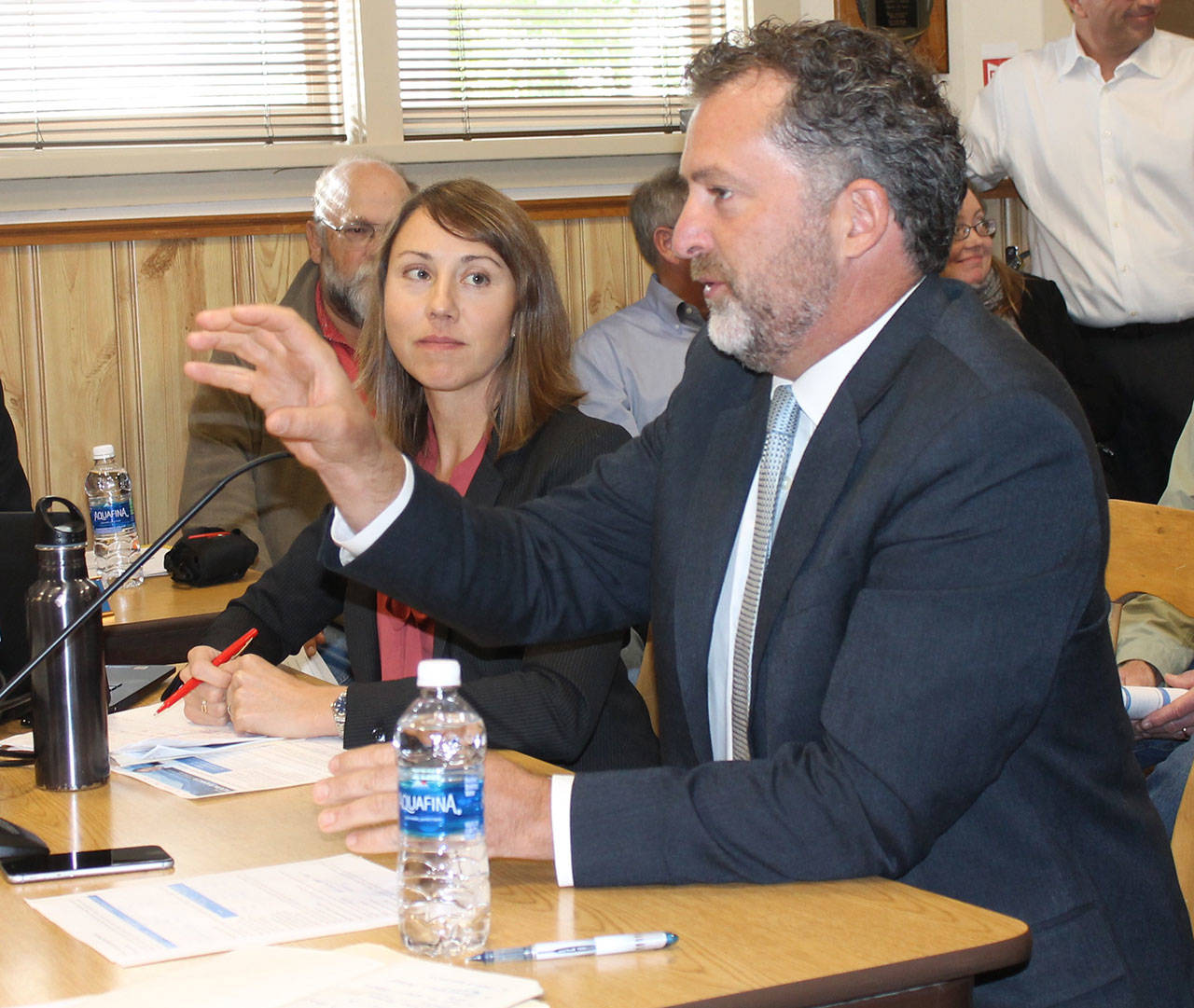At the Washington State Transportation Commission meeting on Sept. 19, most speakers agreed the ferry system isn’t working, including the Washington State Ferries representative herself.
“Either we all work together to fund the service that our customers expect, or we need to work together to change the expectations so our customers understand there is a certain level of service our funding can provide,” said WSF Assistant Secretary Amy Scarton.
The commission met in Friday Harbor to discuss the islands’ unique transportation needs, as well as the recently disrupted summer sailings.
According to a presentation by Sen. Kevin Ranker, D-Orcas, the islands experienced 22 days of disrupted ferry service this summer. This included days when replacement vessels with reduced car capacities were used.
Since funding was slashed by the passing of a voter-led initiative in 2000, said Scarton, WSF has less money to fund boat repairs and vessels are older and fewer.
According to WSF Senior Planning Manager Ray Deardorf, Initiative 695 eliminated a tax on renewing vehicle tabs which funded 15-20 percent of WSF operations and maintenance and 75 percent of capital projects. Capital projects include new vessels and terminals.
Ferry rates have increased roughly 100 percent since then to make up for the operating loss, he added. Another presentation by WSF staff showed that ferry fares in 2015-17 covered only 75 percent of operating costs.
A WSF public relations representative said part of the state’s $.494 gas tax accounts for the rest. According to taxfoundation.org, Washington has the second highest gas tax in the country.
Deardorf also explained that the average lifespan of a Washington State Ferry is 60 years old; the San Juans’ Tillikum is approaching this limit, and 10 WSF boats, including the San Juans’ Elwha and Hyak, are within a decade away.
Yet these older boats aren’t being maintained, explained Ranker. According to WSF data, he said, staff needs $99.1 million to repair ferries on the San Juan Island routes, but they only asked state legislators to fund $9.7 million.
The WSF budget is set by the state’s transportation budget, which is passed by state lawmakers and signed into effect by the governor. The latest two-year budget was signed by the governor just under deadline last June, narrowly avoiding a state-wide government shutdown.
According to a WSF presentation, the transportation budget accounted for 9 percent of the last state biennium budget.
Roger Millar, the Secretary of Transportation for the Washington State Department of Transportation, explained that there would never be enough funds in the state budget to cover any department’s entire maintenance backlog. However, he would like to focus more on maintenance and less on capital spending.
“We need to put money in what we own,” said Millar, as maintenance spending, over time, would be cheaper than purchasing new vessels.
Scarton added that maintenance would not have prevented some vessels from going out of service this summer, after crab pot lines were lodged in their propellers.
Deardorf noted that like most transportation departments at the time, WSF’s long-range plan for 1999 to 2015 focused on expanding the system for a growing population by investing in capital projects. However, after I-695 passed, the following plan for 2009 to 2030 focused on maximizing existing resources instead.
Strategizing for the 2019 to 2040 plan is underway and should be complete by January 2019. It requires WSTC and WSF staff to work together on recommendations for state lawmakers. Ranker also requested the commission provide additional oversight to WSF to prevent issues like service disruptions.
Scarton explained that when a ferry has a problem, staff spends the first day diagnosing it. If the problem is not fixed, the WSF relief vessel is put into service the next day, after backup staff has been notified to work 24-hours in advance.
If there is no relief vessel, like this summer when the Kitsap was out for two months, boats are moved to different routes based on factors like ridership and vessel fit. It costs roughly $14,000 to move a boat, said Scarton, and sometimes multiple boats must be rearranged.
She estimated that WSF is short half a million dollars this summer, compared to the previous one. Yet, Scarton said WSF staff is working on solutions.
“The most important part of this conversation is what are the opportunities to identify the reasons behind the tough summer we had and how can we move forward together,” she said.
Opportunities, said Scarton, include reviewing WSF’s summer service contingency plan, which she said she shared with the public for the first time at this meeting to receive feedback. View the plan at islandssounder.com.
Ranker also noted that San Juan County regularly generates more in state tax revenue than the county receives in state funds, yet, WSDOT seems to concentrate more on roads than water transportation.
“We don’t have a road to drive around when the ferries go down,” he said. “We have a state highway that is our ferries and it needs to be recognized.”
Ferry fiasco
The summer’s broken ferries and altered sailing schedules had the following effects on the San Juan Islands routes.
July: 5.3 percent decline in vehicles / 3.8 percent increase in walk-on passengers
August: 4.3 percent decline in vehicles / 2.3 percent decline in walk-on passengers
Service outages
This timeline shows the vessels that went out of service this summer on the San Juan Islands five-boat ferry route, according to Sen. Kevin Ranker, D-Orcas.
July 16-29: Yakima is out of service. A four-boat schedule is used.
Aug. 6-9: Samish is out of service. A four-boat schedule is used.
Aug. 16: Elwha is out of service for part of the day.
Aug. 30: The Hyak is out of service.
Sept. 2-3: The Elwha is out of service. A four-boat schedule is used.
Washington State Ferries Summer Service Contingency Plan:



